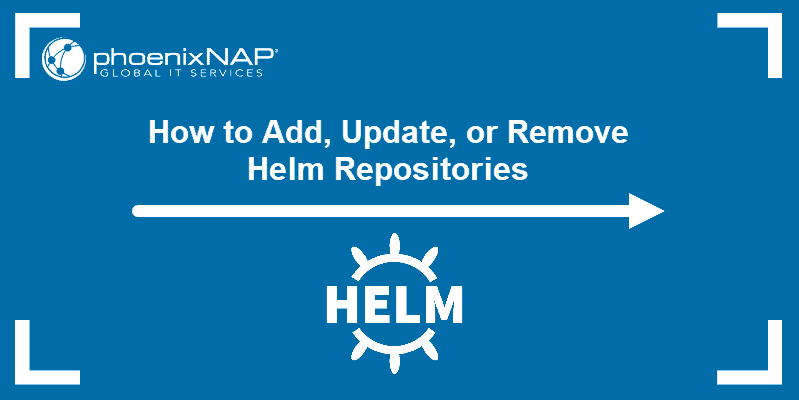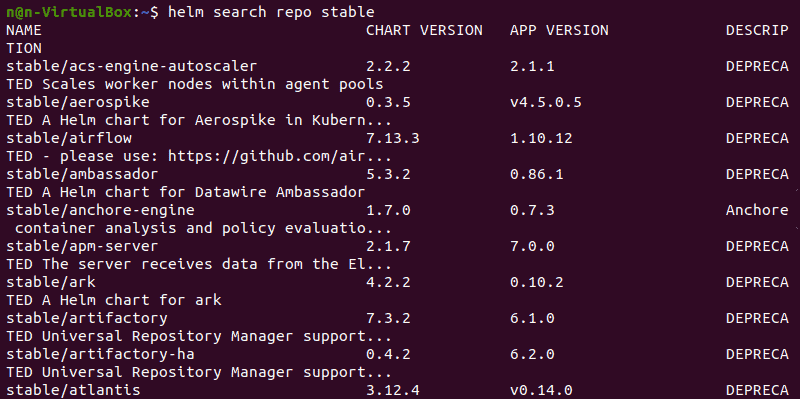Introduction
Helm chart repositories are remote servers containing a collection of Kubernetes resource files. Charts are displayed in directory trees and packaged into Helm chart repositories.
To deploy applications with Helm, you need to know how to manage repositories.
In this tutorial, you will learn how to add, update, or remove Helm chart repositories.

Prerequisites
- A system running Ubuntu, Windows, or Mac.
- Access to a command line/terminal.
- A Kubernetes cluster installed.
- Helm installed and configured.
How to Add Helm Repositories
The general syntax for adding a Helm chart repository is:
helm repo add [NAME] [URL] [flags]To add official stable Helm charts, enter the following command:
helm repo add stable https://charts.helm.sh/stableThe terminal prints out a confirmation message when adding is complete:

List the contents of the repository using the search repo command:
helm search repo stableThe terminal prints out the list of all available charts.

How to Update Helm Repositories
Update all Helm repositories in your system by running the following command:
helm repo updateThe output contains a list of all updated repositories.

How to Remove Helm Repositories
The general syntax for removing Helm repositories is:
helm repo remove [REPO1 [REPO2 ...]] [flags]Remove a Helm repository by entering:
helm repo remove stableThe terminal prints out a confirmation message once the repository is removed.

Note: Replace stable with the name of the repository you wish to remove.
Conclusion
After reading this tutorial, you should know how to add, update, or remove Helm repositories.
If you made some changes to your application that you want to revert, check out our article on how to rollback changes in Helm.